Testing the limits of our 2020 Chevy Bolt
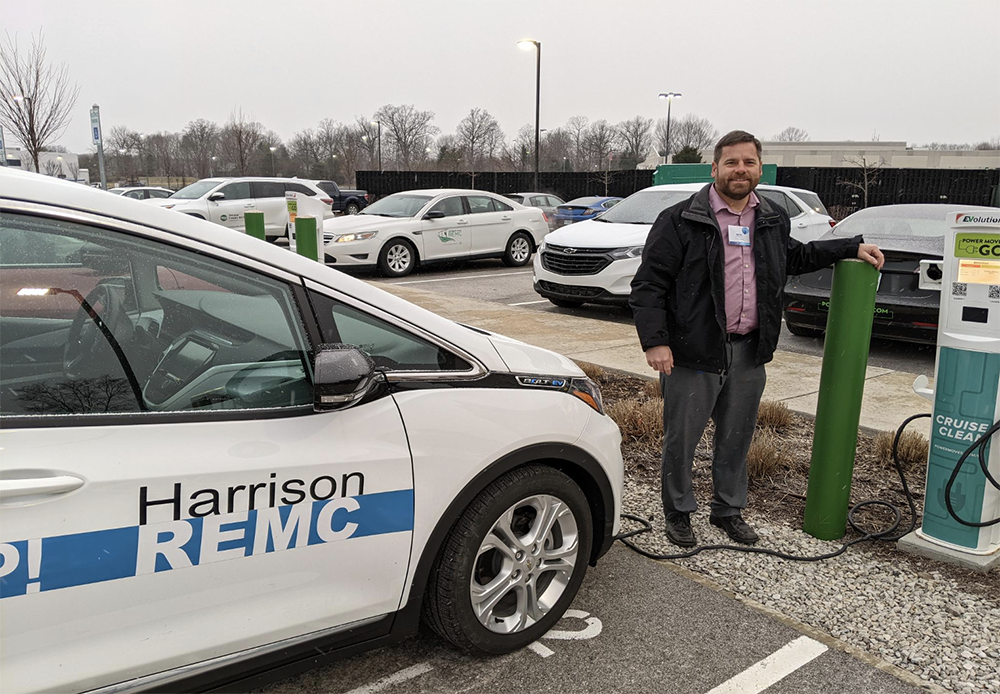
Now that in-person meetings are being held; our Energy Advisor Nick Geswein attended the Indiana Electric Cooperatives Member Service Spring Meeting a few weeks ago. The meeting was in Indianapolis and Nick decided to drive our fully electric Chevy Bolt to learn about the advantages and possible shortcomings that may be involved with driving a fully electric vehicle on a 134-mile trip.
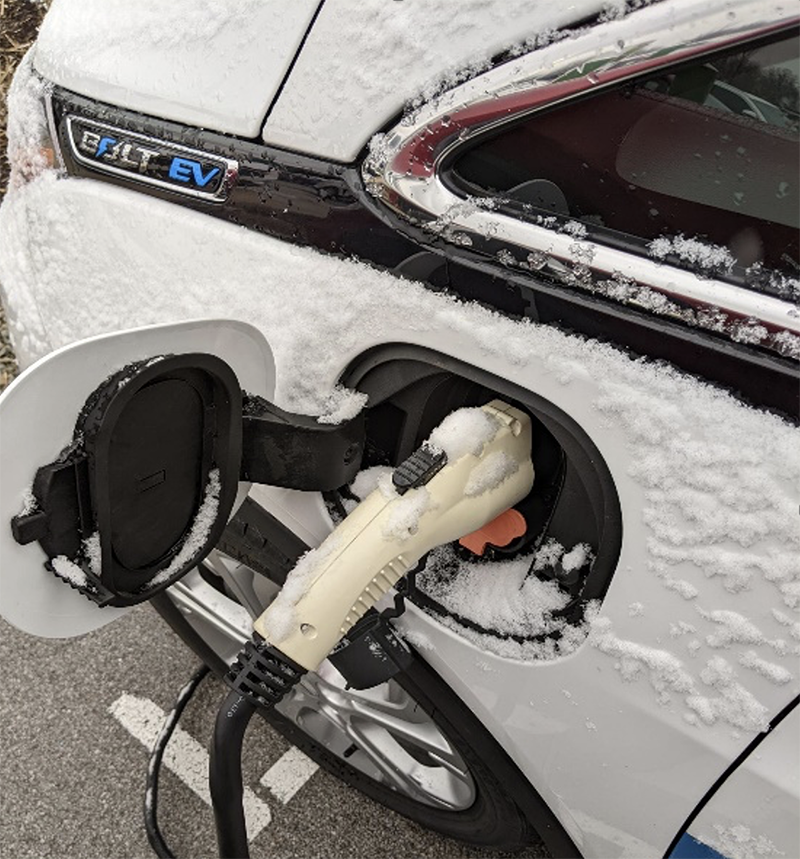
Last fall he traveled to Evansville where he did not get the estimated range (miles per charge) due to the cold temperatures and speeds higher than 55 mph. He experienced a 20%-30% reduction in the projected range on that trip. Electric vehicles like combustion vehicles, don’t get the best efficiency when you travel at speeds above 55 mph. Electric vehicles also loose range due to colder temperatures. There are advancements that will hopefully continue to help electric vehicle improve their performance in cold temperatures, for example some EV manufactures are considering heat pump technology in the vehicles to reduce range loss and gain efficiency. The good news is Nick was able to find a parking garage in Evansville for FREE public charging while he was in his conference during the day, and he then came back to a full charge for the trip back. A positive thing he learned during this trip was that cruise control on an EV is smooth, quiet, and the speed does not fluctuate up and down on hills like many of the current combustion powered vehicles.
Back to the Indianapolis trip, the vehicle charged while he slept the night before heading to Indy. No gas station trip needed. He started out with a projected range of 210 miles. The trip was supposed to be 134 miles to his destination. It was very cold and ended up snowing later in that day and the temperature was between 35-38 degrees. Due to his experience in range reduction on the cold trip to Evansville, he decided to only use the heat when his feet or hands got cold to help get more range (every 20 minutes or so). He did use the heated steering wheel feature, as well as the heated seats. He was able to make it all the way to his 134-mile destination with no stops needed and traveling right at or just over the 70-mph speed limit. He had 70 miles projected range still available upon arrival. So, the trip took an extra 6 miles than the car’s starting projection for the trip. Not bad considering the temperature and the higher speed.
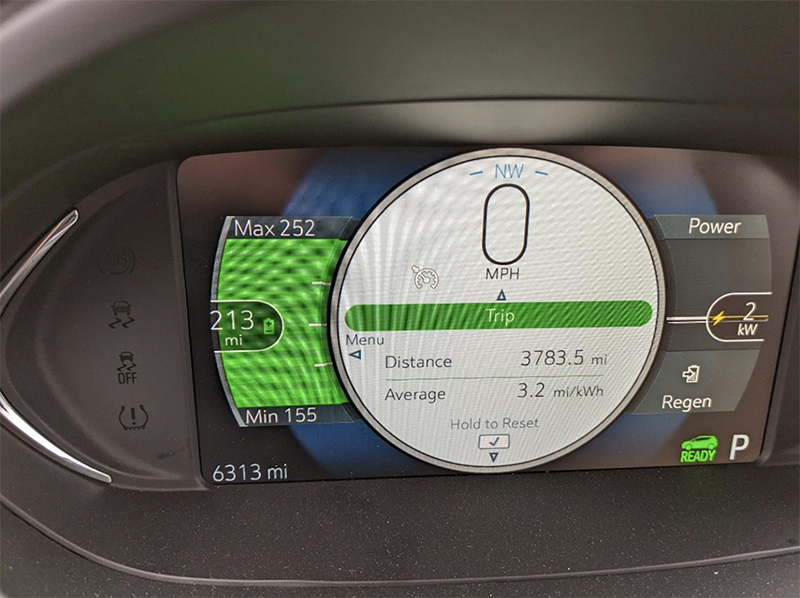
The meeting location had a number of EV chargers, so Nick was able to plug the car and attend the conference. When the conference was over, about 7 hours later the car was fully charged and ready again!
On the way back, he was feeling more confident with the range. He used the heat all the way back with the heated steering wheel and heated seats. He was not as concerned with trying to travel at slower speeds and it was lighlty snowing and still around 35 degrees. The projected range at the start was 213 miles.
He made it back with 83 miles of range left in the battery. So, it did better by about 4 miles of range than its initial trips project, even having used the heat and not being as caution on limiting the speed on the way back.
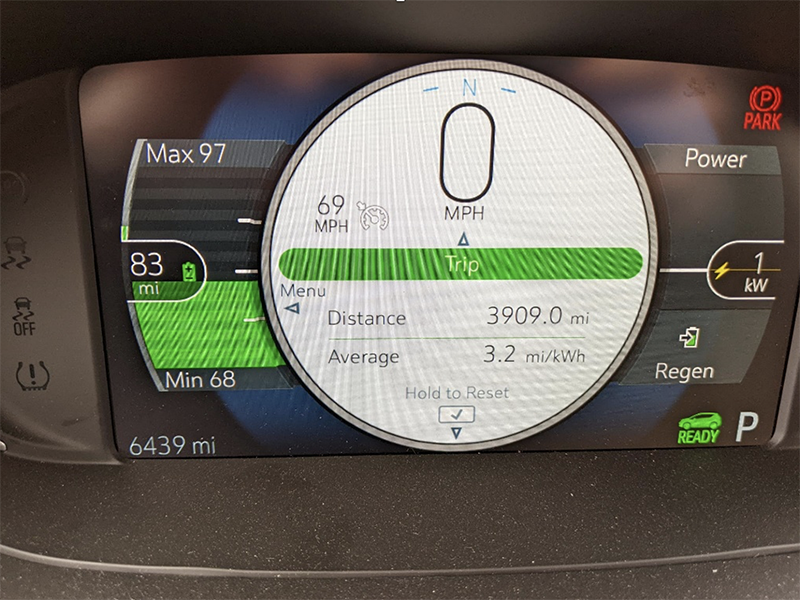
Nick did not need to make a stop for gas on the way there or the way back which made the drive time faster compared to having to stop at a gas station for a combustion vehicle. If he had not been able to charge at the conference or overnight at his hotel, he could have visited a level 3 fast charger on the way back. Most vehicles that are fast charge capable, can get an 80% charge in 40 mins. Nick stopped by a Culver’s on the way back for lunch which took about 40 minutes that he could have very easily timed with a stop to one of the faster chargers to keep from adding much time to the trip if needed. This will surely improve as more of these faster chargers are installed along the expressways and highways, but it is something to consider currently. Not every trip will go as planned right?
Now, what did this trip cost? It took about 55 kwh of electricity both ways (110 kwh). At a 10 cent a kwh electric charge the trip there and back cost $12.10. Yep, that is the correct amount. You can do the math on what it would cost your vehicle to do that trip, but Nick said it would have been a $35 to $50 expense in gasoline costs with his Hyundai Sonata depending on the fluctuating gas pricing.
Check out our Choose EV section on our website for a helpful calculator where you can compare combustion cars gasoline costs with your choice of an EV’s electric costs.
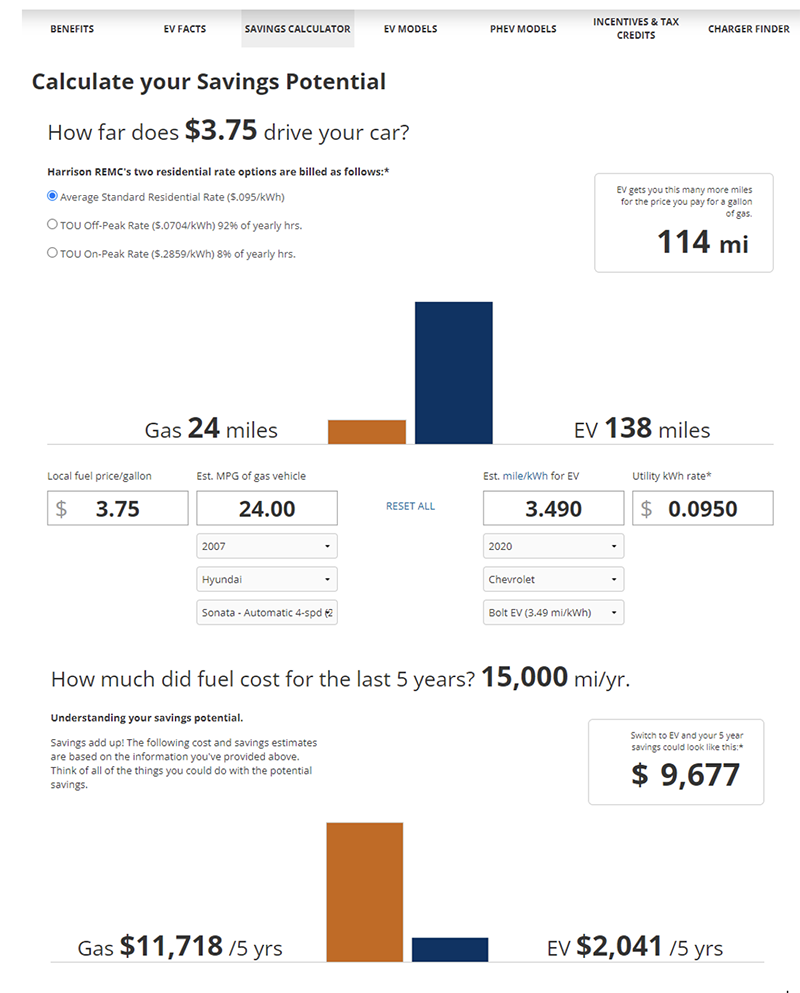
Nick said the trip reaffirmed for him that EV’s are an excellent transportation option for some right now and the number of people it is right for will grow as the EV’s continue to evolve and improve. It will also be better for traveling as we see more of these charging stations installed and available. He said that it was “Fun” to drive. He said that I-65 can get busy and a bit hairy alongside some of those big semi’s, but he felt very safe being able to quickly accelerate away from the nerving scenarios with the EV’s high amount of accelerating torque. For him it shows that EV’s are a great option for transportation when the daily driving range is within a 200-mile range. If you drive farther than that in a day regularly, you may want to consider a plug-in-hybrid until charging and EV’s improve for those consistent longer trips. Overall, he can’t wait until the next time he can make another long trip to continue to learn and share the strengths and weaknesses of the technology. If you are a member and want to test drive the Chevy Bolt, contact Nick at (812) 734-3538.

